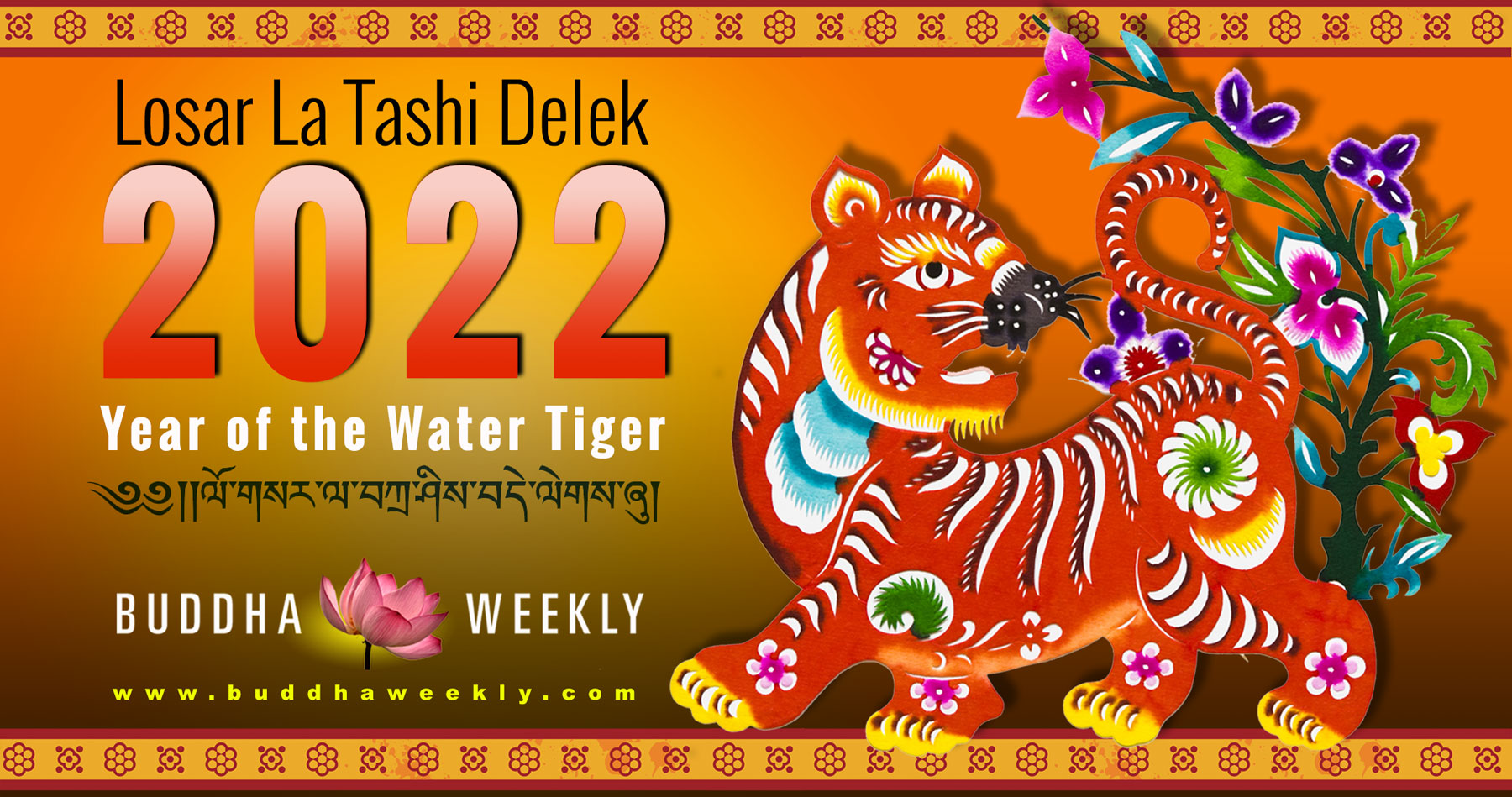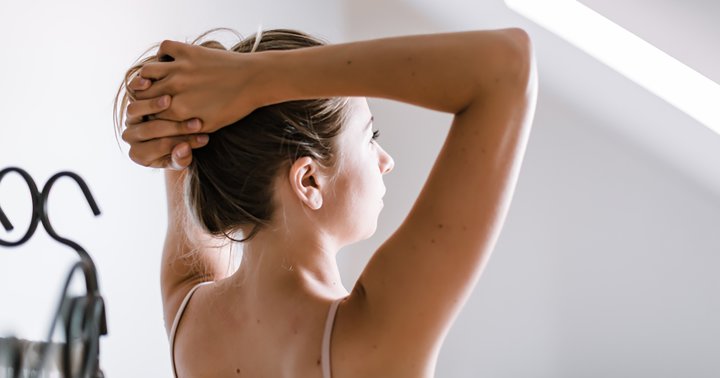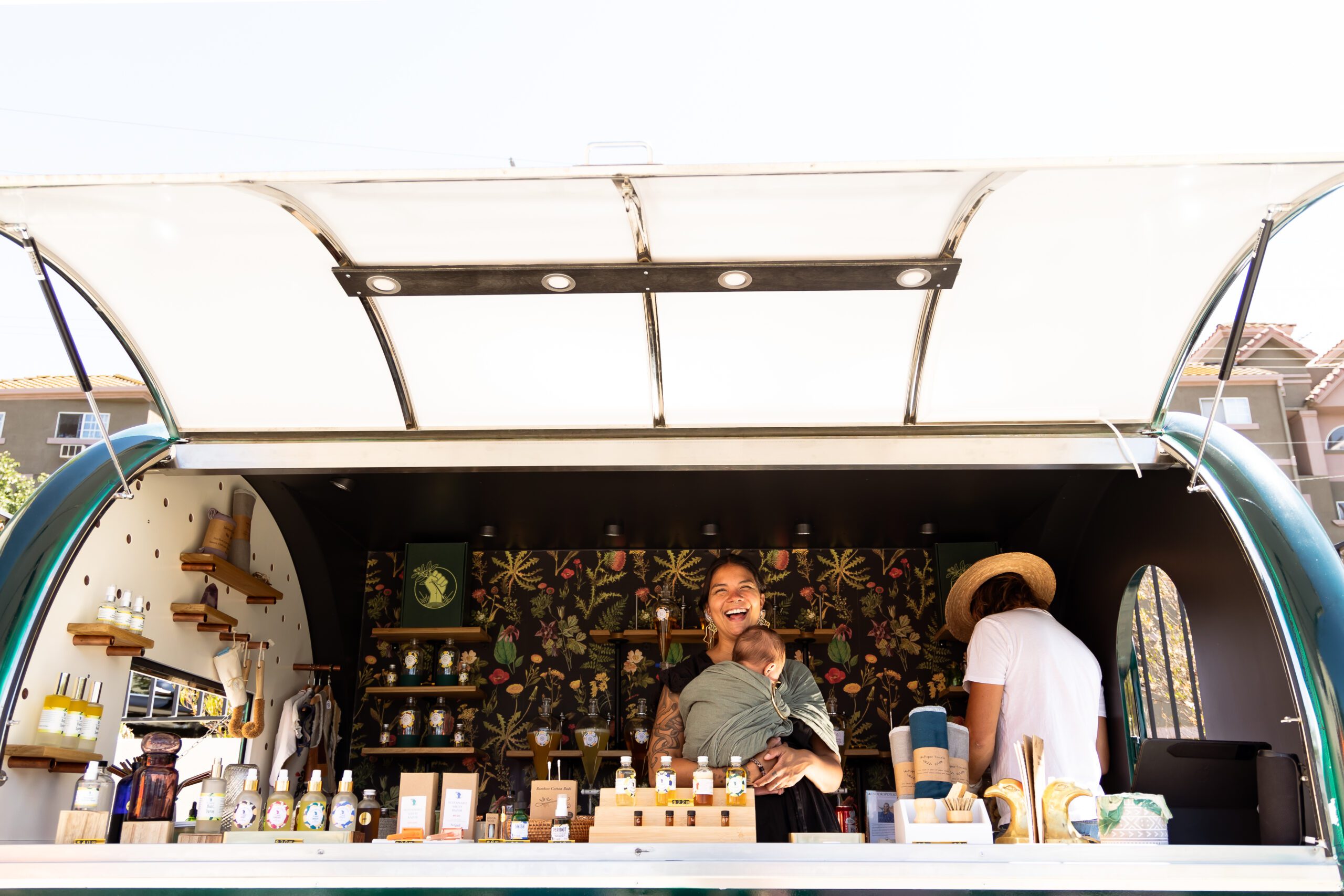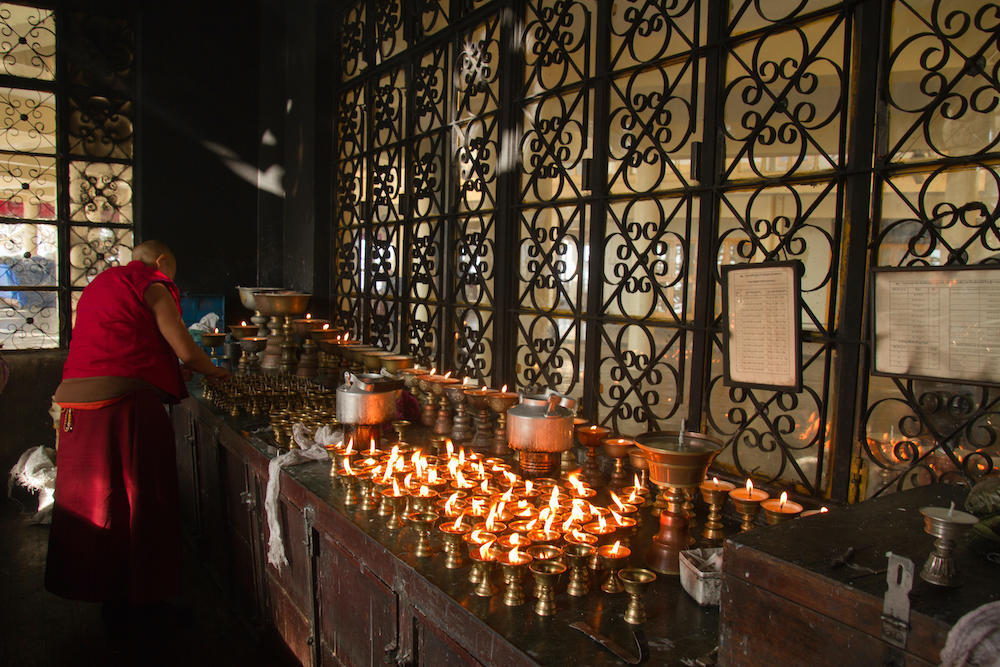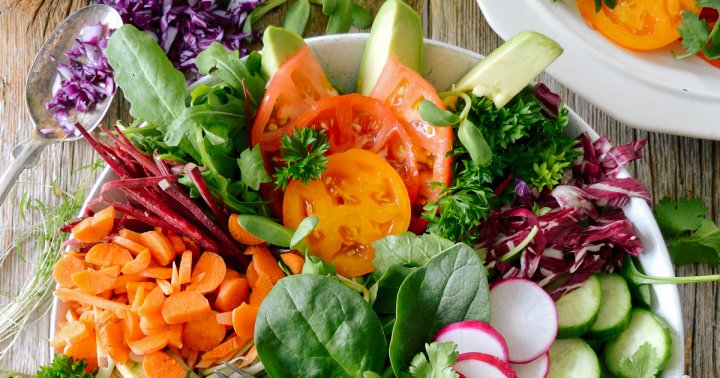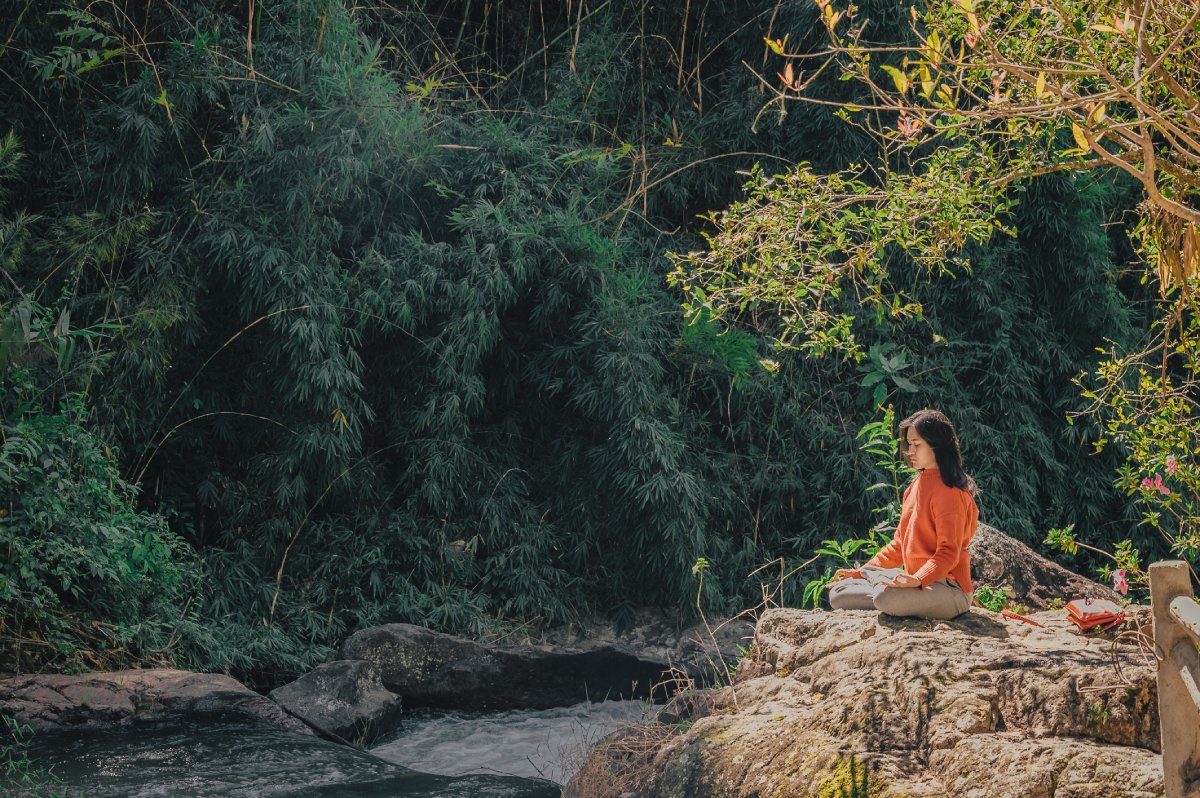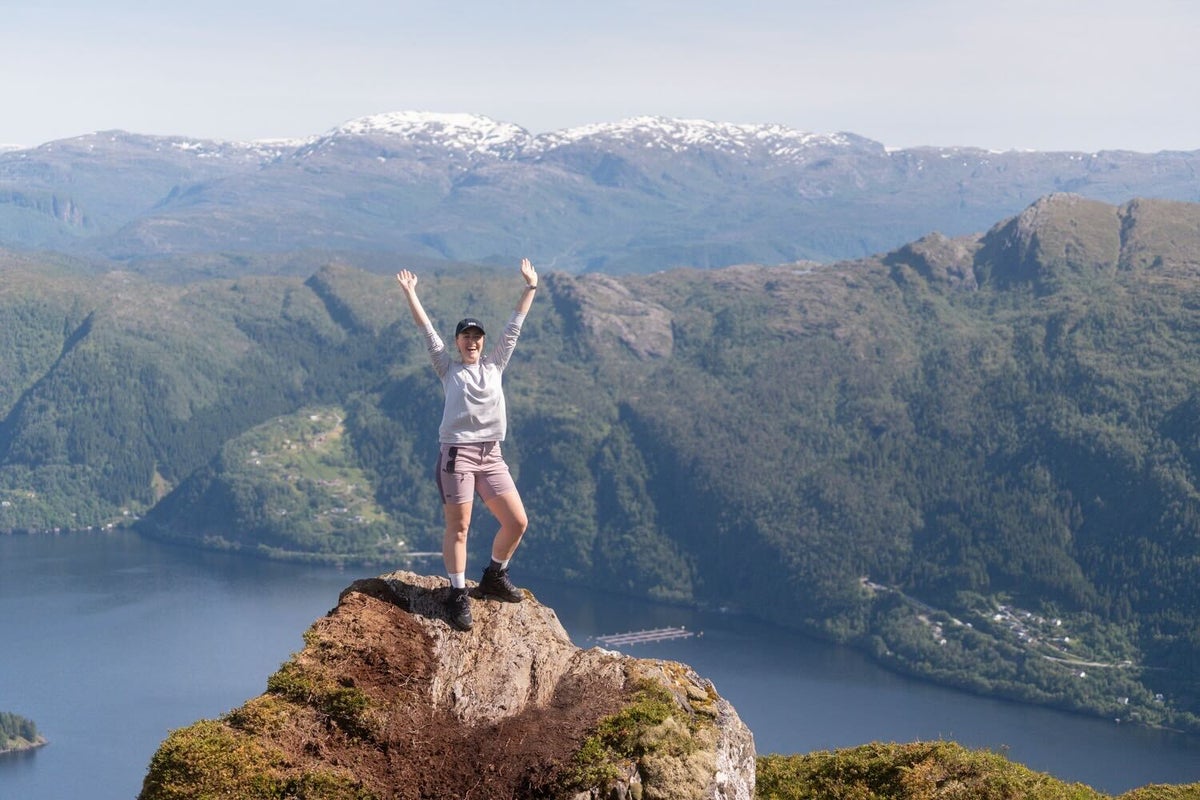Gentle Yoga Poses for Beginners: A Step-by-Step Guide
In the hustle and bustle of modern life, it’s easy to overlook the importance of self-care. Our bodies and minds […]
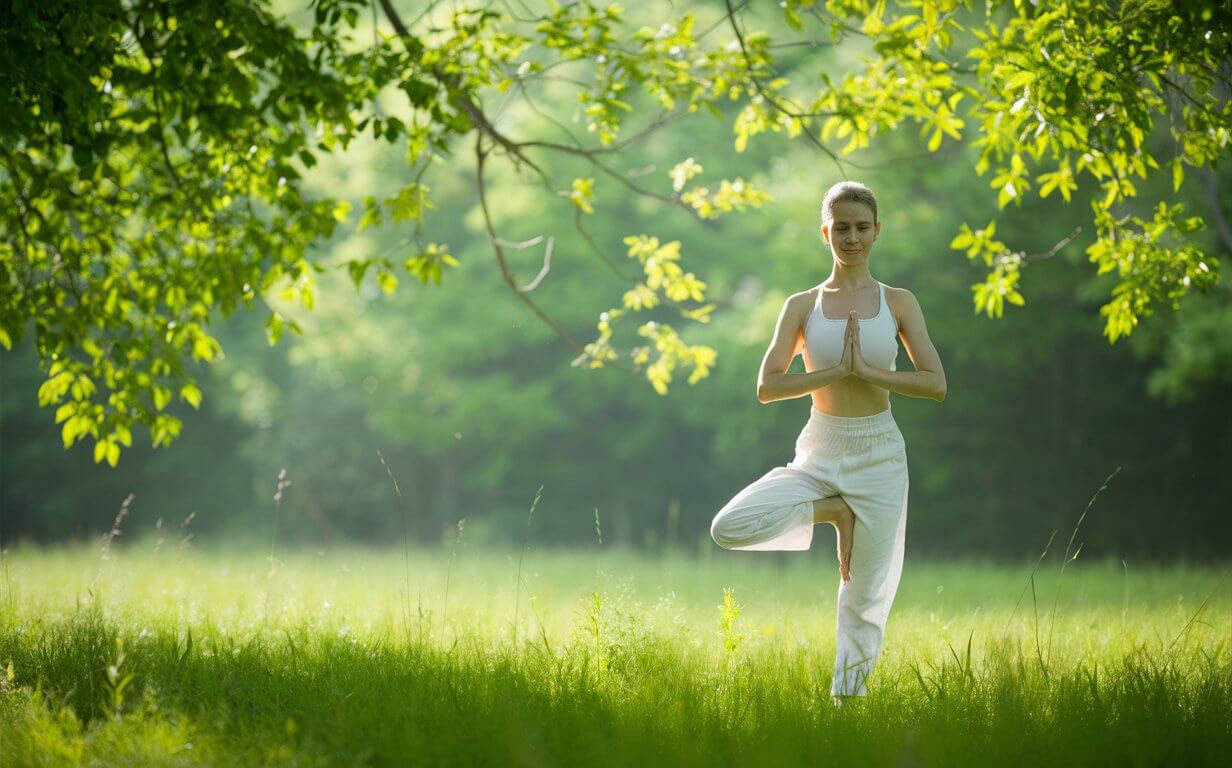
In the hustle and bustle of modern life, it’s easy to overlook the importance of self-care. Our bodies and minds often bear the brunt of stress, tension, and a hectic pace. Amidst the chaos, yoga emerges as a beacon of tranquility, offering a gentle yet transformative path to well-being.
If you’re new to the world of yoga, the vast array of poses and styles can be overwhelming. But fear not, for this comprehensive guide will introduce you to the soothing realm of gentle yoga, a practice tailor-made for beginners seeking a harmonious blend of movement and relaxation.
Gentle Yoga: A Haven for Beginners
Gentle yoga, often referred to as restorative or Yin yoga, is a style that emphasizes slow, mindful movements and deep, passive holds. Unlike the more dynamic flows of Vinyasa or Ashtanga yoga, gentle yoga prioritizes relaxation and stress reduction, making it an ideal choice for beginners and those seeking a more meditative approach to the practice.
The beauty of gentle yoga lies in its accessibility. It requires no prior experience or flexibility, and the poses are often modified to accommodate individual needs and limitations. Whether you’re dealing with stiff joints, chronic pain, or simply seeking a moment of peace, gentle yoga offers a welcoming and supportive space for all.
Embarking on Your Gentle Yoga Journey
Before you roll out your mat, it’s essential to create a tranquil environment conducive to relaxation and focus. Find a quiet space free from distractions, dim the lights, and perhaps light some candles or incense to enhance the soothing ambiance.
Next, gather your props. While gentle yoga can be practiced without props, they can provide additional support and comfort, especially for beginners. A yoga mat, a block, and a strap are essential tools for modifying poses and enhancing alignment.
Now, it’s time to connect with your body and breath. Begin by sitting comfortably in a cross-legged position, such as Sukhasana (Easy Pose). Close your eyes, soften your gaze, and gently bring your attention to your breath. Notice the natural rise and fall of your chest and abdomen, without trying to control or change it.
Once you’re settled, let’s explore the gentle yoga poses that will guide you on your journey towards relaxation and well-being.
Gentle Yoga Poses for Beginners
1. Mountain Pose (Tadasana)
Introduction: Tadasana is the foundation for all standing poses in yoga. It teaches proper body alignment and improves balance and posture. Benefits Improves balance and stability Strengthens core muscles Enhances body awareness Promotes better posture Method: Stand tall with your feet together, big toes touching, and heels slightly apart. Engage your core by pulling your navel inwards towards your spine. Lengthen your spine by imagining you’re being gently pulled upwards from the crown of your head. Press your shoulders down and back, away from your ears. Relax your arms by your sides with your palms facing your thighs. Breathe deeply and hold for 5-10 breaths.2. Downward-Facing Dog (Adho Mukha Svanasana)
Introduction: Downward-Facing Dog is a foundational pose that stretches and strengthens the entire body. It improves blood circulation and calms the mind. Benefits: Stretches hamstrings, calves, and shoulders Strengthens core and upper body muscles Improves circulation Calms the mind Method: Start on your hands and knees, with your hands shoulder-width apart and knees hip-width apart. Push your hips back and up, straightening your legs as much as comfortable. Keep your heels pressing towards the ground, but don’t force them down if they don’t reach the mat. Lengthen your spine by pushing your chest forward and your tailbone back. Engage your core to keep your back flat and avoid hunching your shoulders. Breathe deeply and hold for 5-10 breaths.3. Warrior I (Virabhadrasana I)
Introduction: Warrior I strengthens the legs, improves balance, and builds core stability. It also promotes feelings of power and confidence. Benefits: Strengthens legs, core, and glutes Improves balance and stability Increases hip flexibility Enhances focus and concentration Method: Step one leg back with a deep lunge, keeping your front heel flat on the ground. Bend your front knee until it forms a 90-degree angle, ensuring your knee is directly over your ankle. Extend your arms overhead, reaching your fingertips towards the ceiling with palms facing each other. Keep your back heel lifted or gently place it on the ground if needed. Maintain a straight spine and engage your core to keep your torso upright. Breathe deeply and hold for 5-10 breaths on each side.4. Warrior II (Virabhadrasana II)
Introduction: Warrior II strengthens the legs, opens the hips, and improves balance. It cultivates feelings of strength and stability. Benefits: Strengthens legs, core, and shoulders Improves balance and coordination Opens the hips and chest Boosts confidence and determination Method: Step one leg back with a wide stance, approximately 3-4 feet apart. Turn your front foot out 90 degrees and your back foot slightly inwards. Extend your arms out to the sides, parallel to the ground, palms facing down. Keep your hips facing forward and your torso upright. Breathe deeply and hold for 5-10 breaths on each side.5. Extended Side Angle (Utthita Parvakonasana)
Introduction: Extended Side Angle stretches the sides of the body, opens the hips, and strengthens the legs. It improves flexibility and body awareness. Benefits: Stretches the sides of the body and obliques Opens the hips and groins Strengthens legs and core Improves body awareness and flexibility Method: Step one leg back with a wide stance. Keep your front foot pointed forward and turn your back foot slightly inwards. Reach your torso forward, hinging at the hips, and place your hand on your shin or a block for support. Extend the other arm up towards the ceiling, keeping your gaze upwards or gently forwards (avoid straining your neck). Maintain a long spine and avoid hunching your shoulders. Breathe deeply and hold for 5-10 breaths on each side.6. Triangle Pose (Utthita Trikonasana)
Introduction: Triangle Pose stretches the sides of the body, opens the hips, and strengthens the legs. It promotes balance and stability. Benefits: Strengthens the legs, thighs, and ankles Improves balance and coordination Opens up the chest and shoulders Stimulates the digestive system Method: Triangle Pose (Utthita Trikonasana) strengthens legs, improves balance, and opens your chest. Start in Mountain Pose, step right leg out wide, toes facing forward. Reach arms out to the sides, palms down. Hinge forward from hips, reaching right hand towards right ankle or shin. Hold for 5-10 breaths, then repeat on the other side. Modify as needed!7. Standing Forward Bend (Uttanasana)
Introduction: Standing Forward Bend stretches the hamstrings, back, and shoulders. It calms the mind and promotes relaxation. Benefits: Stretches the hamstrings, back, and shoulders Improves circulation Calms the mind and reduces stress Lengthens the spine Method: Stand with your feet hip-width apart. Hinge at your hips and fold forward, lengthening your spine as you bring your hands towards the floor. If your hamstrings are tight, bend your knees slightly. Let your head hang heavy and relax your neck. Breathe deeply and hold for 5-10 breaths.8. Reverse Warrior (Viparita Virabhadrasana)
Introduction: Reverse Warrior stretches the front of the body, opens the chest, and strengthens the legs. It promotes feelings of openness and expansion. Benefits: Stretches the front of the body (quads, chest) Opens the chest and shoulders Strengthens the back legs and core Enhances balance and coordination Method: Start in Mountain Pose. Step one leg back with a deep lunge, keeping your front heel flat on the ground. Bend your front knee until it forms a 90-degree angle. Extend your back arm out behind you and reach your front arm overhead, palms facing each other. Keep your hips facing forward and your torso upright. Breathe deeply and hold for 5-10 breaths on each side.9. Garland Pose (Malasana)
Introduction: Garland Pose improves hip mobility, strengthens the core, and promotes digestion. It’s a resting pose that can be quite grounding. Benefits: Improves hip mobility and flexibility Strengthens the core and inner thighs Promotes healthy digestion Creates a sense of grounding and relaxation Method: Squat down with your feet hip-width apart and soles of your feet together. Bring your heels close to your body, but don’t force them down if uncomfortable. Sit back on your heels as if you’re about to sit on a chair. If this is difficult, you can place a rolled-up blanket or yoga block underneath your heels for support. Rest your torso on your thighs and extend your arms out in front of you, palms facing down. Alternatively, you can bring your palms together in prayer position (Anjali Mudra) at your heart center. Breathe deeply and hold for 5-10 breaths.10. Half Forward Bend (Ardha Uttanasana)
Introduction: Half Forward Bend stretches the hamstrings, back, and shoulders. It improves circulation and calms the mind. Benefits: Stretches the hamstrings, back, and shoulders Improves circulation Calms the mind and reduces stress Lengthens the spine Method: Stand with your feet hip-width apart. Hinge at your hips and fold forward from your torso, lengthening your spine as you bring your hands towards the floor or a block placed in front of you. If your hamstrings are tight, bend your knees slightly. Let your head hang heavy and relax your neck. Breathe deeply and hold for 5-10 breaths.11. Pyramid Pose (Parsvottanasana)
Introduction: Pyramid Pose stretches the hamstrings, calves, and back. It strengthens the legs and core and improves balance. Benefits: Stretches the hamstrings, calves, and back Strengthens the legs and core Improves balance and coordination Increases spine flexibility Method: Step one leg back with a wide stance. Keep your front foot pointed forward and your back foot slightly inwards. Hinge at your hips and reach your torso towards your front shin, placing your hand on your shin or a block for support. Extend your other arm overhead, reaching towards the ceiling. Keep your gaze upwards or gently forwards (avoid straining your neck). Maintain a long spine and avoid hunching your shoulders. Breathe deeply and hold for 5-10 breaths on each side.12. Raised Hands Pose (Urdhva Hastasana)
Introduction: Raised Hands Pose strengthens the core and upper body, improves posture, and opens the chest. It energizes the body and promotes feelings of joy and expansion. Benefits: Strengthens the core and upper body Improves posture and spinal alignment Opens the chest and shoulders Increases energy levels Creates feelings of joy and expansion Method: Stand tall with your feet hip-width apart. Reach your arms overhead, palms facing each other. Lengthen your spine and engage your core. Breathe deeply and hold for 5-10 breaths.13. Low Lunge
Introduction: Low Lunge stretches the quadriceps, hamstrings, and hip flexors. It strengthens the legs and core and improves balance. Benefits: Stretches the quadriceps, hamstrings, and hip flexors Strengthens the legs and core Improves balance and stability Increases hip mobility Method: From Downward-Facing Dog, step one leg forward in between your hands. Lower your back knee towards the ground, keeping your hips stacked over your front heel. If your knee doesn’t comfortably reach the ground, place a blanket or block underneath for support. Reach your torso forward, lengthening your spine, and rest your forehead on the floor or a block. Breathe deeply and hold for 5-10 breaths on each side.14. Tree Pose (Vrksasana)
Introduction: Tree Pose improves balance, strengthens the legs and core, and enhances focus and concentration. It cultivates a sense of grounding and stability. Benefits: Improves balance and coordination Strengthens the legs, core, and ankles Enhances focus and concentration Promotes a sense of grounding and stability Method: Stand tall with your feet together. Shift your weight onto one leg and gently lift the other foot, placing the sole on your inner calf, ankle, or thigh (avoid placing it directly on your knee joint). If balancing is challenging, start by placing your foot on your lower leg closer to your ankle. Keep your hips square and your standing leg strong. Reach your arms overhead, palms facing each other. Breathe deeply and hold for 5-10 breaths on each side. For added stability, you can gaze at a fixed point in front of you.15. Downward-Facing Dog Split (Adho Mukha Svanasana Variation)
Introduction: Downward-Facing Dog Split is a variation of Downward-Facing Dog that stretches the hamstrings and inner thighs. It strengthens the upper body and improves balance. Benefits: Stretches the hamstrings and inner thighs Strengthens the upper body and core Improves balance and coordination Increases spine flexibility Method: From Downward-Facing Dog, spread your feet wider than hip-width apart. Keep your heels pressing towards the ground and lengthen your spine. Breathe deeply and hold for 5-10 breaths.16. Plank Pose (Chaturanga Dandasana)
Introduction: Plank Pose strengthens the core, shoulders, and legs. It improves posture and stability. Benefits: Strengthens the core, shoulders, and legs Improves posture and spinal alignment Increases stability and balance Builds overall body strength Method: Start in a high push-up position with your hands shoulder-width apart and wrists directly under your shoulders. Engage your core and keep your body in a straight line from head to heels. If this is too challenging, lower your knees to the ground and modify into a low plank. Breathe deeply and hold for as long as you can comfortably maintain good form.17. Cat-Cow Stretch (Marjaryasana – Bitilasana)
Introduction: The Cat-Cow Stretch improves spine mobility, massages the internal organs, and promotes relaxation. It’s a great way to warm up the spine before other poses. Benefits: Improves spine mobility and flexibility Massages internal organs and aids digestion Promotes relaxation and reduces stress Warms up the spine for other yoga poses Method: Start on your hands and knees, with your hands shoulder-width apart and knees hip-width apart. As you inhale, arch your back, dropping your belly towards the mat and looking up (cow pose). Engage your core and gently lift your head and chest, rounding your back (cat pose). Keep your movements slow and fluid, focusing on coordinating your breath with your movements. Flow smoothly between these movements for several repetitions.18. Bridge Pose (Setu Bandha Sarvangasana)
Introduction: Bridge Pose strengthens the core, hamstrings, and glutes. It improves hip mobility and opens the chest. Benefits: Strengthens the core, hamstrings, and glutes Improves hip mobility and flexibility Opens the chest and shoulders Stimulates the thyroid gland Method: Lie on your back with your knees bent and feet flat on the floor, hip-width apart. Lift your hips off the ground, keeping your shoulders grounded. Interlace your fingers under your body for support, or extend your arms out to the sides with palms facing down. Maintain a straight spine and avoid arching your lower back. Breathe deeply and hold for 5-10 breaths.19. Cobra Pose (Bhujangasana)
Introduction: Cobra Pose strengthens the back muscles, opens the chest and shoulders, and improves spine flexibility. Benefits: Strengthens the back muscles and spine Opens the chest and shoulders Improves spine flexibility and posture Stimulates the digestive system Method: Lie on your stomach with your forehead on the mat. Place your hands under your shoulders with your elbows tucked close to your body. Press into your palms to lift your upper torso off the mat. Keep your hips grounded and avoid arching your lower back. Lengthen your neck and gaze upwards (avoid straining your neck). Breathe deeply and hold for 5-10 breaths.20. Knees, Chest, and Chin (Ashtanga Namaskara)
Introduction: Knees, Chest, and Chin is a variation of the push-up that strengthens the core, shoulders, and triceps. It improves flexibility in the spine and hamstrings. Benefits: Strengthens the core, shoulders, and triceps Improves spine and hamstring flexibility Builds upper body strength Increases cardiovascular endurance (with repetition) Method: Start on your hands and knees, with your hands shoulder-width apart and knees hip-width apart. Tuck your toes under and push your hips back towards your heels, bringing your chest down towards the mat (think modified push-up). Keep your knees close to the ground and your core engaged. If this is too challenging, lower your knees completely to the ground and rest your forehead on the mat. Breathe deeply and hold for a few breaths.21. Staff Pose (Dandasana)
Introduction: Staff Pose improves posture, strengthens the core, and lengthens the spine. It’s a grounding pose that promotes relaxation and meditation. Benefits: Improves posture and spinal alignment Strengthens the core and back muscles Lengthens the spine Promotes relaxation and meditation Method: Sit on the floor with your legs extended in front of you. Keep your feet flexed or pointed. Sit tall with your spine straight and shoulders relaxed. Engage your core and lengthen your neck. Breathe deeply and hold for 5-10 breaths.22. Cobbler’s Pose (Baddha Konasana)
Introduction: Cobbler’s Pose stretches the inner thighs, groin muscles, and hips. It promotes relaxation and can be a meditative pose. Benefits: Stretches the inner thighs, groin, and hips Improves hip mobility and flexibility Promotes relaxation and reduces stress Can be a meditative pose Method: Sit on the floor with your legs extended in front of you. Bend both knees and bring the soles of your feet together. Gently press your knees down towards the floor (avoid forcing them down if uncomfortable). Lengthen your spine and rest your hands on your feet or ankles. Breathe deeply and hold for 5-10 breaths.23. Easy Pose (Sukhasana)
Introduction: Easy Pose is a comfortable meditation posture that allows for relaxation and mindfulness. Benefits: Creates a comfortable position for meditation Promotes relaxation and mindfulness Improves focus and concentration Method: Sit on the floor with your legs crossed comfortably. If crossed-legged is uncomfortable, you can sit with your legs extended in front of you or prop yourself up with a blanket or bolster. Rest your hands on your knees or lap with palms facing up. Close your eyes and focus on your breath. Breathe deeply and hold for as long as desired.24. Half Lord of the Fishes Pose (Ardha Matsyendrasana)
Introduction: Half Lord of the Fishes Pose twists the spine, stretches the shoulders and hips, and improves digestion. Benefits: Twists the spine and improves spinal mobility Stretches the shoulders and hips Improves digestion and elimination Promotes detoxification Method: Sit on the floor with your legs extended in front of you. Bend your right knee and place your right foot flat on the floor outside your left hip. Twist your torso to the right, placing your left hand behind you and reaching your right arm over your right thigh. Look over your right shoulder (modify by gazing upwards if needed). You can use your left hand to gently press on your right thigh for a deeper twist. Keep your spine lengthened and avoid hunching your shoulders. Breathe deeply and hold for 5-10 breaths on each side.25. Head to Knee Pose (Janu Sirsasana)
Introduction: Head to Knee Pose stretches the hamstrings, spine, and shoulders. It improves flexibility and circulation in the legs. Benefits: Stretches the hamstrings, spine, and shoulders Improves flexibility in the hamstrings and lower back Enhances circulation in the legs Calms the mind and promotes relaxation Method: Sit on the floor with your legs extended in front of you. Bend your right knee and bring the sole of your right foot towards your groin. Reach your torso forward, lengthening your spine as you walk your hands towards your right foot. If possible, clasp your foot or ankle, or hold a strap around your foot for support. If your hamstrings are tight, keep your knee slightly bent. Let your head hang heavy or rest your forehead on your shin or a block. Breathe deeply and hold for 5-10 breaths on each side.26. Seated Forward Bend (Paschimottanasana)
Introduction: Seated Forward Bend stretches the hamstrings, spine, and shoulders. It calms the mind and promotes relaxation. Benefits: Stretches the hamstrings, spine, and shoulders Improves flexibility in the hamstrings and lower back Calms the mind and promotes relaxation Stimulates the digestive system Method: Sit on the floor with your legs extended in front of you. Hinge at your hips and fold forward from your torso, lengthening your spine as you bring your hands towards your feet. If your hamstrings are tight, bend your knees slightly or keep your feet flexed. Let your head hang heavy or rest your forehead on the floor or a block. Breathe deeply and hold for 5-10 breaths.27. Seated Wide Angle Straddle (Upavistha Konasana)
Introduction: Seated Wide Angle Straddle stretches the inner thighs, groin muscles, and hips. It improves hip mobility and flexibility. Benefits: Stretches the inner thighs, groin, and hips Improves hip mobility and flexibility Stimulates the internal organs Can be a meditative pose Method: Sit on the floor with your legs extended out to the sides, forming a wide V-shape. Keep your feet flexed or pointed. Gently fold forward from your hips, lengthening your spine as you reach your hands towards your feet or the floor in front of you. If reaching your feet is difficult, use a strap or block for support. Breathe deeply and hold for 5-10 breaths.28. Happy Baby Pose (Ananda Balasana)
Introduction: Happy Baby Pose gently stretches the inner thighs, hamstrings, and groin. It releases tension in the lower back and hips, and promotes relaxation. Benefits: Stretches the inner thighs, hamstrings, and groin Releases tension in the lower back and hips Calms the mind and promotes relaxation Can be a gentle massage for the internal organs Method: Lie on your back with your knees bent and feet flat on the floor. Bring your knees towards your chest and grasp the outsides of your feet with your hands. Gently rock side to side or sway back and forth, finding a gentle rhythm that soothes your lower back. Breathe deeply and hold for as long as desired.29. Supine Spinal Twist (Supta Matsyendrasana)
Introduction: Supine Spinal Twist gently twists the spine, stretches the hips and shoulders, and improves digestion. Benefits: Gently twists the spine and improves spinal mobility Stretches the hips and shoulders Improves digestion and elimination Promotes relaxation Method: Lie on your back with your arms extended out to the sides, palms facing down. Bend your right knee and bring it across your body, placing your right foot flat on the floor outside your left hip. Turn your head to gaze towards the right, keeping your shoulders grounded on the mat. If comfortable, you can gently press your left knee down towards the ground to deepen the twist. Breathe deeply and hold for 5-10 breaths on each side.30. Child’s Pose (Balasana)
Introduction: Child’s Pose is a resting pose that allows for relaxation and reflection. It relieves lower back pain and gently stretches the hips and ankles. Benefits: Promotes relaxation and rest Relieves lower back pain and tension Gently stretches the hips and ankles Provides a sense of comfort and security Method: Kneel on the floor with your toes together and knees hip-width apart. Sit back on your heels and rest your torso between your thighs. Extend your arms out in front of you with your palms facing down or fold your arms alongside your body. Relax your forehead on the mat and surrender to the comforting stillness. Breathe deeply and hold for as long as desired.31. Corpse Pose (Savasana)
Introduction: Corpse Pose is a final resting pose that allows for complete relaxation and integration of the yoga practice. It promotes mindfulness and stillness. Benefits: Promotes deep relaxation and mental rejuvenation Integrates the benefits of the yoga practice Enhances mindfulness and self-awareness Reduces stress and anxiety Method: Lie flat on your back with your arms by your sides and palms facing up. Close your eyes and allow your entire body to soften and relax. Focus on your breath, letting go of any thoughts or worries. Savor this moment of deep relaxation. Hold for 5-10 minutes or longer.By following these instructions and listening to your body, you can safely and effectively perform these gentle yoga poses and experience the many benefits of yoga. Remember, yoga is a journey, not a destination. Be patient with yourself, celebrate your progress, and enjoy the practice!
Deepen Your Practice
As you progress on your gentle yoga journey, consider incorporating additional elements to enrich your practice:
Pranayama (Breathwork): Pay close attention to your breath throughout your practice. Coordinate your movements with your inhales and exhales, finding a smooth and rhythmic flow. Meditation: After your postures, dedicate a few minutes to meditation. Sit comfortably with your eyes closed and focus on your breath, observing your thoughts and feelings without judgment. Gratitude: Before ending your practice, take a moment to express gratitude for your body and its capabilities.Remember
Listen to your body. Modify poses as needed and avoid pushing yourself to the point of pain. Be patient. Progress takes time and consistency. Embrace the journey and enjoy the present moment. Breathe. Deep, mindful breathing is the foundation of a mindful and therapeutic yoga practice.With gentle yoga as your guide, you can cultivate a sense of well-being, inner peace, and a renewed connection with your body. So, unroll your mat, take a deep breath, and embark on this transformative journey of mindful movement and relaxation.
The Art of Gentle Yoga: Beyond the Poses
Remember, gentle yoga is more than just a series of physical postures. It’s a holistic practice that integrates movement, breathwork, and mindfulness to cultivate inner peace and well-being. Here are some additional tips to enhance your gentle yoga experience:
Listen to your body: Don’t push yourself beyond your limits. Modify poses or use props as needed to ensure comfort and safety. Focus on your breath: Coordinate your movements with your breath. Inhale as you lengthen and expand, and exhale as you release and contract. Be present: Pay attention to the sensations in your body and mind without judgment. Practice regularly: Even a few minutes of gentle yoga each day can make a significant difference in your overall well-being.Conclusion
Embark on your gentle yoga poses journey with an open mind and a gentle spirit. Celebrate the small victories, savor the moments of relaxation, and allow yourself to be guided by the wisdom of your body and breath. As you cultivate a consistent practice, you’ll discover a newfound sense of calmness, flexibility, and inner strength that transcends the mat and permeates every aspect of your life. Visit our YouTube channel to find out more information on yoga and meditation.
Namaste!

 KickT
KickT 







